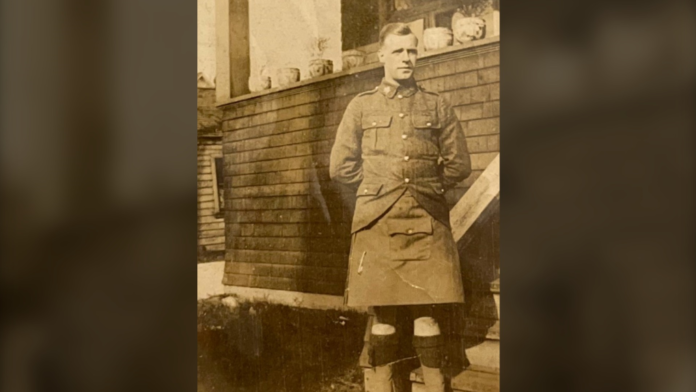The family of a man who fought and died in World War I said they thought they were being scammed at first when they received the call asking for a DNA sample to identify their distant relative.
Cpl. Percy Howarth was just 23 years old when he was reported missing when his battalion, 7th British Columbia Canadian Infantry, stormed Hill 70.
The 1917 Battle of Hill 70 in France, a fierce and deadly 10-day battle, is a major Canadian victory in World War I. More than 10,000 Canadians died, were wounded, or disappeared in that battle, and the young corporal was believed to be among the dead.
It would be more than a century before his family found out what really happened.
Howarth’s remains were found in 2011, but it took experts more than a decade to identify the soldier. His name was announced by the Department of Defense earlier this week.
“The fact that they were able to identify him using DNA found essentially in a mass grave is truly amazing,” Carolyn Cooling said in an interview with CTV News. Cooling is Howarth’s great-great niece.
It was so amazing for her and her family that at first they didn’t believe the news or that the request for a DNA sample was legitimate.
“We thought it was a scam,” she said. “We didn’t expect a call like that. Once we realized what it was, it was really humbling to know how much effort they went to to find the family.”
Cooling said the family knows part of her history; Part of her grandfather’s family had moved to Canada and his uncles had died in battle. Beyond that, not much was known about Howarth until recently.
Howarth’s remains were among those of five Canadian soldiers found clearing munitions in France. All died on August 15 or 16, 1917, according to those who worked to identify the men.
The others were identified, but Howarth remained a mystery for years.
Members of the Canadian Forces Victim Identification Program were able to learn who Howarth was through DNA testing.
Coordinator Sarah Lockyer told CTV News of the effort, “They died for Canada, so I think it’s the least we can do to give them their identity back.”
Howarth was found with a whistle, a Canadian badge, and a pocket watch that, with some effort, still works today.
But with the bodies of 1,300 Canadians still missing from the battlefield near Loos, France, those clues weren’t enough.
Lockyer, a forensic anthropologist, had to sift through centuries-old archives to find a family member with a DNA match.
The team used estimates of the soldier’s age and height to shorten the list, but limited themselves to mitochondrial DNA extracted from the bones.
This DNA is passed from mother to child, so they had to find someone in Howarth’s maternal line to confirm a match.
Lockyer said they would normally take care of siblings first, but all four of Howarth’s sisters died childless, so no DNA was passed to offspring that way.
She said Howarth’s mother was an only child, so the team had to go back another generation to Howarth’s grandmother’s family, using records from the early 18th century and tracing the lineage from there.
“It can get very complicated because things aren’t digitized or easily accessible online,” Lockyer said.
“It can get quite difficult to trace back from grandmother more than 200 years later to someone alive today who is not just willing to provide a DNA sample – because we know it’s bizarre that the Canadian government is after yours DNA asks, it’s a bizarre call — but there can also be a certain reluctance, especially when they don’t know who we’re talking about.
That’s what happened in this case. They found a donor willing to provide a sample, but that person did not know the soldier.
“It’s definitely the longest identification case we’ve had and that’s because of the complications with genealogy – to find the right DNA donor. It was complicated,” Lockyer said.
After Howarth’s identity is established, he is buried in a British cemetery in France, where the remains of the other four Canadian soldiers lie.
More than 30 unidentified soldiers have been named since the military’s victim identification program began in 2007, but thousands more remain.
With files from The Canadian Press















